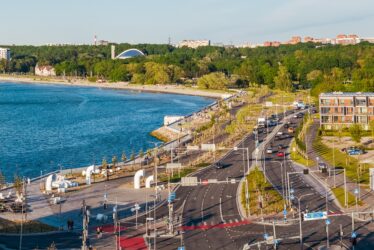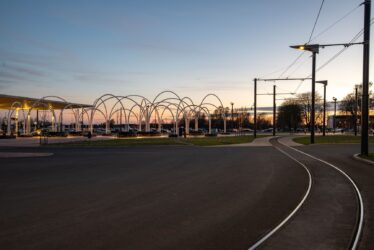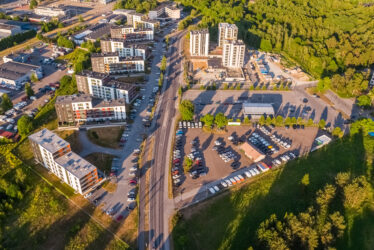Ülemiste traffic junction
The Tallinn–Tartu–Võru–Luhamaa highway is one of the busiest roads in Estonia. It starts in the centre of Tallinn and is the main road in the city. Due to the significantly increased traffic loads, the Ülemiste junction had become the main bottleneck for urban transport in Tallinn and therefore needed a major overhaul. In addition to limiting transit traffic through the city centre, one of the main goals of the project was to improve access to the developing shopping district as well as to the international airport. This included the development of infrastructure for public transport and non-motorised road users, which was previously non-existent. Preparations started in 2006, when K-Projekt AS began drawing up the preliminary design, which envisaged converting the junction into a multi-level interchange. Construction work commenced in the summer of 2010 and saw the construction of 12.9-km-worth of roads, two road tunnels, one road viaduct, and two railway viaducts, as well as three tunnels for non-motorised road users together with 10.02-km-worth of shared-use paths. In addition to road construction, a new street lighting system and stormwater and domestic water sewerage were designed, railway power and telecommunication lines were reconstructed, new traffic light regulated intersections were designed, and more than 14 hectares of land were decorated through landscaping, including hundreds of trees and thousands of shrubs. The project resulted in the completion of Estonia’s largest and most complex junction, which has become the most important transport structure in Tallinn and the whole of Estonia. For the reconstruction of the Ülemiste junction, K-Projekt won the 2013 Concrete Structure of the Year Award from the Estonian Concrete Association.
Galerii





Vaata teisi referentse












